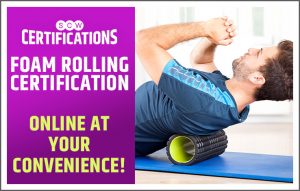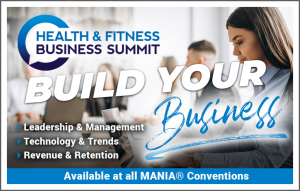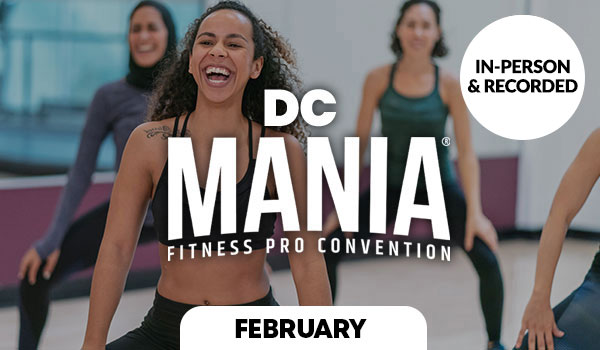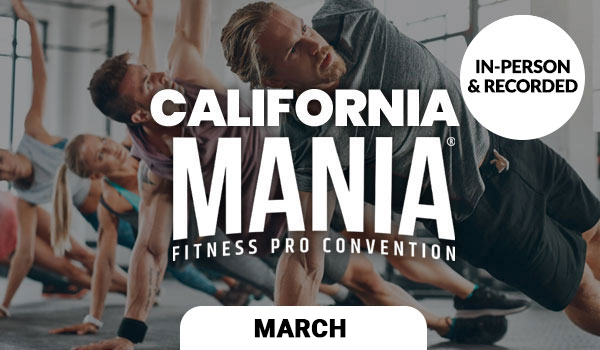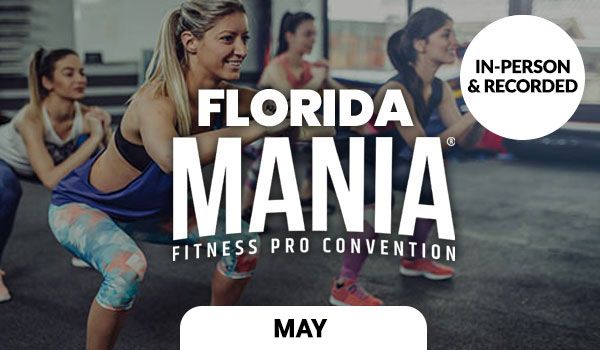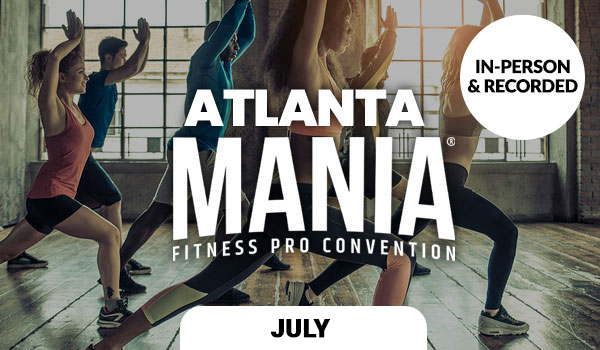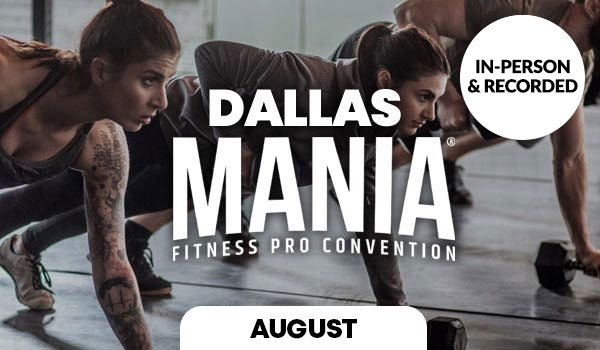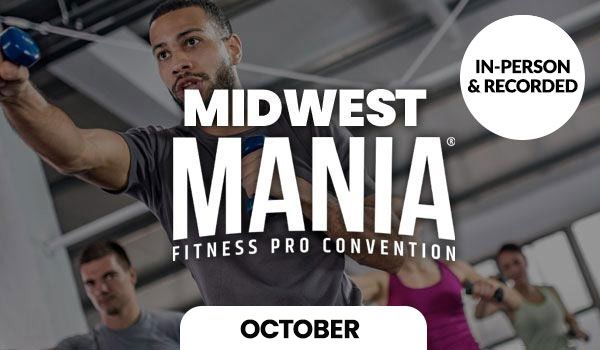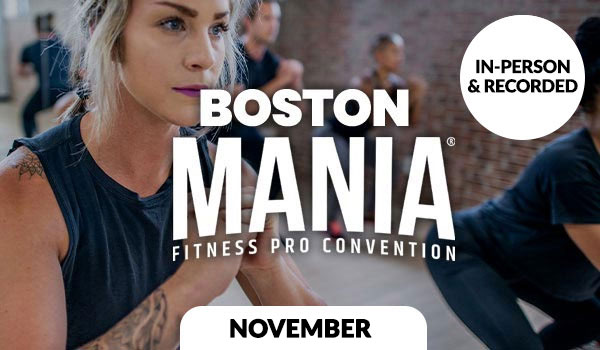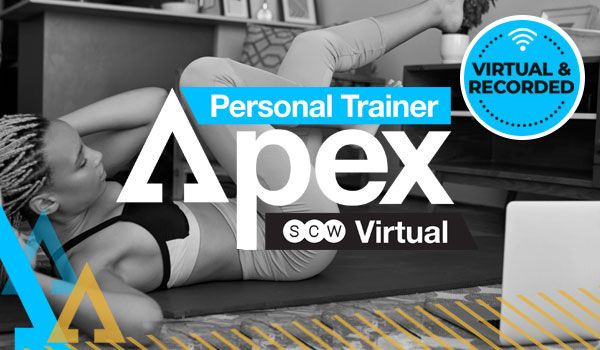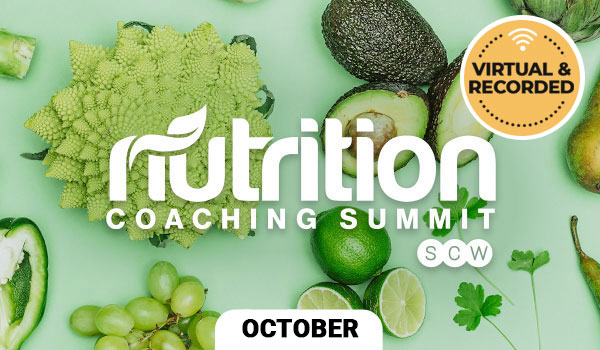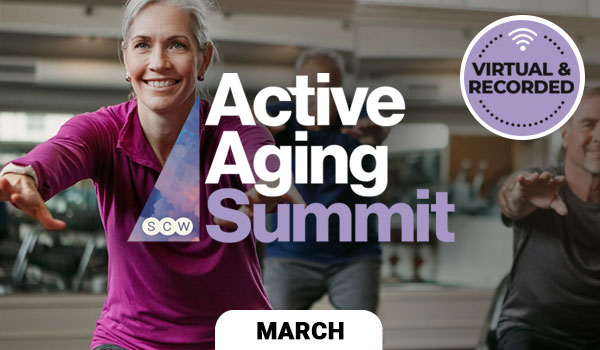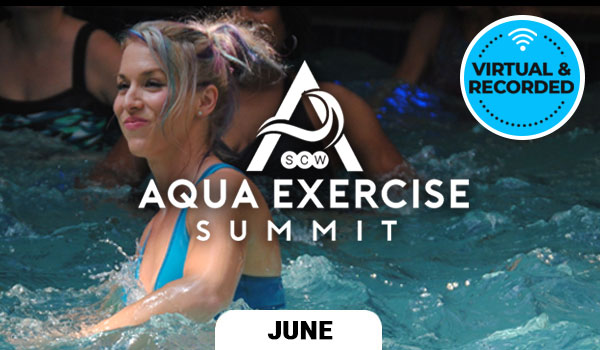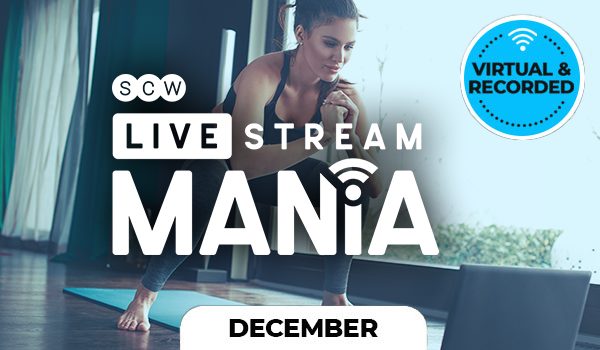
SCW Spotlite: Issue 58

Foam Rolling for Fitness
Foam rolling, also known as self-myofascial release, is a method that has transformed from a once mysterious performance technique used only by professional athletes, coaches, and therapists, to a familiar practice used daily in gyms for many types of training and performance enhancement. Self-myofascial release (SMR) is a safe and very effective hands-on technique that involves applying gentle, sustained pressure into the myofascial connective tissue to help eliminate muscle and soft tissue restrictions, support recovery, eliminate pain and restore range of motion. Fascia is the connective tissue that holds muscles together throughout the body. Individuals of all levels of fitness have adopted foam rolling into their routine for enhanced performance, a speedier recovery time between workouts and better overall training results. Self-myofascial release or SMR as it is abbreviated, is a term used to indicate self-massage and can be used synonymously with foam rolling. Recent information, new technology and affordable product designs have introduced an increasing array of foam rollers and other self-massage products for improved training and recovery into the consumer market. Foam rolling can be performed with a roller, a ball, the hands, or many other products by applying pressure to specific points on the muscles or soft tissues of the body using a systematic approach. Through this simple method, it is possible to aid in the recovery of muscles and assist them in returning to a more relaxed state; and therefore, normal function. Normal function means muscles are elastic, healthy, and ready to perform.
The magic of training for fitness and sport occurs in between and after the workout. The workout is the stimulus for change, therefore; recovery both post-workout and between workouts is essential for both competitive and recreational athletes alike to find homeostasis and gain the necessary improvements in strength, cardiovascular conditioning or other benefits desired. Recovery is not a one size fits all method. An appropriate recovery program should be individualized for each individual and take into consideration:
- Age
- Gender
- Current fitness level
- Volume/intensity of training
- Type of training
Please remember that lack of time for adequate recovery puts athletes at risk for decreased performance, burnout, and injury. In fact, exercise physiologists have identified particular types of over training – Functional and Non-functional Overreaching (FOR & NFOR) as well as Overtraining Syndrome. Signs and symptoms of overtraining syndrome include increased fatigue, lower fitness and athletic performance, muscular and physiological stress, sleeplessness, interrupted sleep cycles, appetite issues, heart rate variability, dehydration, and many others. Overtraining is a process that can result in overreaching. Functional over reaching may be used as a stimulus to add an extra push into an athlete’s program or routine, which is particularly 5 helpful when competition is forthcoming. So, although this type of over training may be helpful, it needs to be closely monitored. Non-functional over reaching is when this over training concept is taken too far for too long, and the athlete does not benefit from the additional stress but experiences diminished performance because of the lack of recovery, likely even long-term injury. Strategies for boosting acute and chronic recovery, include among many things such as foam rolling and self-massage.
How Foam Rolling Works
The deep compression of self-myofascial release allows for consistent blood flow to the deep and superficial muscles of the body, and aids in the restoration process and recovery from exercise of healthy tissue. The body naturally wants to be healthy and strong, but often with training, poor posture, nutritional deficiencies, dehydration and other lifestyle factors, an extra boost is needed to achieve optimal muscle and tissue health. When the compression of the rolling or massage device is applied to a specific area of the body, blood flow is cut off or obstructed. This creates a blood flow deficit. However, when the tissue is released, blow flows back into the area with more pressure, flushing the tissue with oxygenrich blood and other nutrients removing waste products. This flush-back effect not only causes more nutrient-rich blood to flow back into the area, it also allows for the release of toxins. It also decreases the tendency for adhesions to develop by addressing the fascia. The foam roller or other self-massage tool can work as an external device to release pressure and increase blood flow in these local, muscular areas.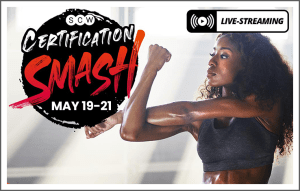
The Benefits of Foam Rolling
Foam rolling can be an important part of total body recovery, the dynamic warm up or the transition out of an exercise session. The overall benefits of foam rolling can include but are not limited to the following:
Corrects muscle imbalances
Rolling can help with muscular tightness, which may in turn relieve the imbalance between muscle groups or agonist and antagonist muscles (for example a tight hamstring (agonist) may limit the range of motion in the quadriceps (antagonist).
Improved tissue tolerance
Foam rolling and self-massage can improve the toughness and density of muscle tissues, which is why with repeated rolling, denser rollers and harder surfaces are necessary to achieve the same benefits.
Improves joint range of motion (ROM)
6 Self-massages using a small ball performed on the bottom of the foot may enable greater extension of the toes and the ankle joint allowing for a greater range of motion through that area.
Decreases muscle soreness and pain
Delayed onset muscle soreness (DOMS) has many causes. Foam rolling can help with tissue massage, which can bring more blood flow to the muscle group(s) needing healing and recovery. This will decrease the duration of DOMS and the potential for muscle or joint pain caused by activity.
Enhances performance
Releasing trigger points can help to reestablish proper movement patterns and pain free movement ultimately with the goal of enhancing overall performance.
Promotes circulation
Foam rolling and self-massage techniques can be used to promote circulation and the flushing of metabolic waste products. Total body rolling post-workout can serve to begin the recovery process.
Trigger Points
Foam rolling can be used to release muscle tightness in the muscles and fascia of the body. These muscular and fascial adhesions are also known as trigger points. Releasing trigger points helps to reestablish proper movement patterns and pain free movement, and ultimately, to enhance performance. Many trigger point therapies attempt to shut down pain signals with sustained pressure to the area. These techniques can result in a disruption of long-term restrictions, which can contribute immensely to inefficient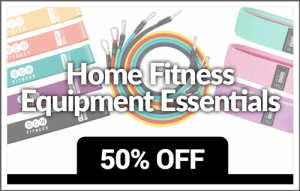 and even painful movement patterns causing joints and tissues to work much harder to attain the ranges of motion crucial to movement success. Many times, these inefficiencies due to muscle restrictions, can lead to inflammatory responses in muscles and fascia. To understand what a trigger point is, imagine a bungee cord with a knot tied into it. Envision stretching the cord which creates tension, thus stretching the unknotted portion of the cord representing the muscle and the attachment points (tendons and possible ligaments). The knot, however, has remained unaltered. Using a foam roller or other self-massage device can assist in breaking up these muscle knots resuming normal blood flow and function to the soft tissues. The goal to this corrective recovery technique is to get the athlete or fitness enthusiast back to the point of pain free, normal functioning.
and even painful movement patterns causing joints and tissues to work much harder to attain the ranges of motion crucial to movement success. Many times, these inefficiencies due to muscle restrictions, can lead to inflammatory responses in muscles and fascia. To understand what a trigger point is, imagine a bungee cord with a knot tied into it. Envision stretching the cord which creates tension, thus stretching the unknotted portion of the cord representing the muscle and the attachment points (tendons and possible ligaments). The knot, however, has remained unaltered. Using a foam roller or other self-massage device can assist in breaking up these muscle knots resuming normal blood flow and function to the soft tissues. The goal to this corrective recovery technique is to get the athlete or fitness enthusiast back to the point of pain free, normal functioning.
For information on Foam Rolling and the Certifications (Practical Approach to Recovery & Rolling), please visit: https://scwfit.com/store/product/foam-rolling-online-certification/
Practical Approach to Recovery & Rolling Certification
Recovery has come to the forefront of training programs because of its powerful role in performance, pain reduction, and injury prevention. Leave this certification with the ability to obtain and retain more clients who will work out more often with you as the recovery expert. This certification examines the current research and applied physiology of foam rolling before, during, and after a workout. Examine the effects of rolling versus self-myofascial release, and we will review current research and the application of other rolling tools and techniques. Learn to breathe, relax, roll, and adapt the ready-to-use rolling protocols to create a customized recovery class. This certification includes a coaching module using techniques that include program-design to offer a systematic approach when leading group recovery classes.
EDUCATIONAL MATERIALS INCLUDE:
- SCW Foam Rolling Course Manual
- Online Certification Outline and Instructions
- Online Exam
- There’s No Place Like Foam Streaming Video
- SCW (6.0), AFAA (6.0), NASM (0.6), AEA (2.0), ACSM (6.0), NFPT (1.2), ACE (0.4)
- Includes FREE Live Certification of same course within 1 year.
 About the Author: Sara Kooperman, JD
About the Author: Sara Kooperman, JD
Sara Kooperman, JD, CEO of SCW Fitness Education, WATERinMOTION®, and S.E.A.T. Fitness sits on the ACSM Communication & Public Information Committee, the Gold’s Gym Think Tank, the canfitpro Advisory Panel and was a founding board member for the Women In Fitness Association (WIFA). Recently nominated for the IDEA Fitness Leader of the Year Award, Kooperman won the 2022 Most Innovating Fitness Pro by Fitness Industry Technology Council. She is also an inductee into the National Fitness Hall of Fame, an Illinois State Businesswoman of the Year, and an esteemed panelist for IHRSA’s Talks & Takes Monthly Talk Show.

Your Guide to Choosing Recovery Devices
Having spent the past three years entrenched in the wellness and Biohacking space, I’ve learned that, when it comes to wellness and recovery modalities, there are lots to choose from. From a naturopathic perspective, all of them can be bundled into three distinct categories: Earth, Wind, or Fire (not to be confused with the famous band). Earth refers to grounding or physical therapies. Wind refers to oxygenation therapies. And Fire includes light and temperature therapies.
Earth modalities suited for fitness facilities include:
Pulsed Electro Magnetic Frequency (PEMF) – This type of therapy utilizes low levels of electrical fields designed to support the body’s cellular health. Humans are electrical beings, and the earth emits a pulsing electromagnetic field. In essence, human beings are inductively charged with their physical connection to the earth (literally feet on the ground). Most people are indoors a vast majority of the time and rarely are running around barefoot. To make matters worse, man-made materials in shoes, blacktop, cement, and other hard surfaces block much of the inductive charge we would naturally obtain when outdoors. Add to this the extraordinary amount of negative EMFs we are now being exposed to and the result is low energy, poor sleep, accelerated aging and overall declining health. PEMF is designed to stimulate blood flow as the result of triggering an internal reaction. Some PEMF devices only stimulate macro-circulation, while others stimulate both macro and micro-circulation (the latter comprises 74% of the body’s vessels). There are many different types of PEMF. Devices such as TENS Units and Dry Needling are examples, but they require a licensed medical professional to administer and are for more acute situations. The type of PEMF ideally suited for clubs is low-level, low frequency, which makes them safe with very few contraindications. 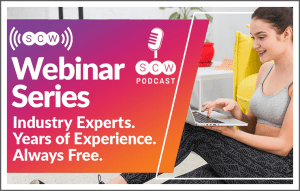 These therapies can be administered laying down on a massage table or utilizing lounge-type chairs, giving the therapy a spa-like environment that is attractive to the average member.
These therapies can be administered laying down on a massage table or utilizing lounge-type chairs, giving the therapy a spa-like environment that is attractive to the average member.
Compression – Most operators are familiar with compression, particularly for the lower body. Referred to as Intermittent Pneumatic Compression (IPC) in the medical world, compression utilizes a fabric sleeve that is repeatedly filled with air pressure and then released. The therapy is designed to help improve circulation to the arteries and veins through an external influence (vs. PEMF). A benefit to compression therapy is that it also acts as a massage to the muscles and tendons. Albeit not as relaxing as PEMF therapies, some users prefer the intenseness of compression. Similar to PEMF, there are a variety of choices for compression. Lower limb, hip, body, and arm applicators are available. An operator can start with one applicator and add additional as revenue grows. Hydrobeds and 4-D compression massage chairs would also fit into this category.
Wind modalities appropriate for fitness facilities include:
Hyperbaric Oxygen Therapy (HBOT) – Traditionally used for wound healing and decompression sickness with divers, HBOT has been gaining popularity in the recovery space for the last decade. As it sounds, HBOT involves breathing pure oxygen in a pressurized chamber that is typically 2 – 3 times the normal air pressure. With the additional oxygen, the body gets not only a recovery boost but also is known to boost stem cell production and immune response. The challenge with HBOT is the upfront cost of the machine as well as the need for oxygen tanks and a licensed technician to operate them.
Exercise With Oxygen Therapy (EWOT) – This is a method of breathing higher levels of oxygen while one is exercising. This type of therapy uses either a face mask or nasal cannulas that are connected to oxygen generators that utilize air in a room, compress it and remove argon and nitrogen. The result is oxygen which is around 94%! The biggest physiological difference between HBOT and EWOT has to do with CO2. When exercising with oxygen, an increased heart rate produces more CO2, which in turn, increases oxygen intake. The theory is one will obtain faster results. Of course, EWOT is great for athletes while the HBOT is attractive to a much wider market profile.
Fire modalities fitness operators should consider include:
Red Light Therapy – Also called photobiomodulation (PBM), red light therapy utilizes visible light that is placed close to the skin. The premise is that the photons of the light trigger the mitochondria of the cells, which then generates adenosine triphosphate (ATP) to promote healing. Red light therapy has been shown to help with a variety of health issues, from the skin to pain relief. The options for red light devices are vast, ranging from small, targeted applicators (for face) to larger body panels to full-body beds that look just like tanning beds/booths.
Far Infrared Sauna – Where one can see red light, far infrared waves are invisible to the human eye. The sun emits infrared waves, which is why humans have used “Sunbathing” as a form of healing (not just the modern-day desire to be tan). Infrared waves penetrate deeply into the skin, heating the body from the inside, causing vasodilation, and activating sweat glands. This triggers the release of toxins from the body through the skin, which is the body’s largest organ. Athletes find that infrared saunas speed lactic acid removal and aid in more restful sleep.
Cryotherapy – On the opposite end of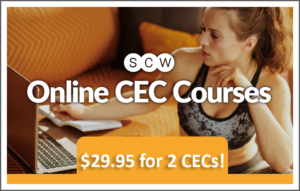 the Fire modalities is cryotherapy or cold therapy. Cold reduces blood flow (vasoconstriction) and is known to have two specific physiological effects. First, when the body believes it is freezing, the body responds by sending blood toward the organs as a protection mechanism. When the body warms, the blood vessels open up, allowing oxygen and blood to flow back into the tissues, creating a flushing effect. Second, reduced blood flow can lower inflammation and nerve activity, which are both associated with pain relief. Cold therapies have been around since the beginning of time with people using frigid water temperatures to “plunge.” Today, cold temperatures can be created with either nitrogen or electronics within a full-body chamber or around specific body parts.
the Fire modalities is cryotherapy or cold therapy. Cold reduces blood flow (vasoconstriction) and is known to have two specific physiological effects. First, when the body believes it is freezing, the body responds by sending blood toward the organs as a protection mechanism. When the body warms, the blood vessels open up, allowing oxygen and blood to flow back into the tissues, creating a flushing effect. Second, reduced blood flow can lower inflammation and nerve activity, which are both associated with pain relief. Cold therapies have been around since the beginning of time with people using frigid water temperatures to “plunge.” Today, cold temperatures can be created with either nitrogen or electronics within a full-body chamber or around specific body parts.
Other recovery and wellness devices fall within the Biohacking space. The ones we have discussed in this article are fairly mainstream and highly sought after. Each can be brought into a facility as a stand-alone offering or put into a recovery and wellness space with other therapies. “Stacking hacks,” allows for package programs and a higher potential per transaction revenue! Most importantly, these therapies attract a wide spectrum of consumers, not just athletes. This provides operators the opportunity to venture out from recovery into wellness and tap into an entirely new market of prospects that are not currently interested in fitness.
 About the Author: Casey Conrad
About the Author: Casey Conrad
Casey Conrad is a long-time industry sales and marketing consultant. She has authored numerous industry books and has spoken worldwide. For the past four years, Casey has added wellness facilities and holistic practitioners to her list of clients with a primary focus on using recovery and medical devices as a marketing magnet and revenue generator. She is now bringing these strategies back into the fitness industry. Casey can be reached at 401-932-9407 or [email protected]

Weaker Bones, Weakening Brain?
by Amy Norton
Courtesy of HealthDay
Key Takeaways
- Weakening bones may be a warning sign for mental decline, new research reveals
- Poor nutrition and lack of activity can contribute to bone loss as well as problems with memory and thinking that may progresss to dementia
- Researchers also note that the abnormal “plaque” proteins that build up in the brains of Alzheimer’s disease can harm bone density
THURSDAY, March 23, 2023 (HealthDay News) — For some older adults, thinning bones may be a harbinger of waning memory, a new study suggests.
The study, of more than 3,600 older adults, found that those with relatively low bone density were at greater risk of being diagnosed with dementia within the next decade. The one-third of participants with the lowest bone mass at the hip faced double the risk of dementia as the third with the strongest hip bones.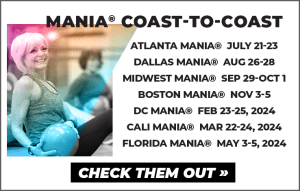
Researchers said the findings — published March 22 in the journal Neurology — do not mean that thinner bones help cause dementia.
Instead, they suspect that declining bone mass is one part of the early dementia process — before problems with memory and thinking skills become apparent.
And that implies that doctors should pay attention to bone health as soon as older adults are diagnosed with dementia, said senior researcher Dr. Mohammad Arfan Ikram.
One of the main reasons that people with dementia end up in nursing homes is poor mobility and falls, noted Ikram, a professor at Erasmus University Medical Center in Rotterdam, the Netherlands.
“We know that low bone mineral density is a strong risk factor for poor mobility, and falls and fractures,” he said. “Therefore, it can be helpful in persons with early-stage dementia to also pay proper attention to their bone health — and where possible optimize it.”
The study is not the first to connect bone health to dementia risk.
“This is an association we’ve seen before. For example, osteoporosis has been linked to dementia risk,” said Heather Snyder, vice president of medical and scientific relations at the Alzheimer’s Association.
It’s not completely clear why bone and brain health are connected, according to Snyder, who was not involved in the new research. But poor nutrition and lack of physical activity could be part of the story, she said.
Both can contribute to bone loss and to cognitive decline (problems with memory and thinking that may progress to dementia). Conversely, people in cognitive decline can become less active or change their eating habits for the worse, which could affect their bone density.
Ikram agreed that inadequate nutrition and lack of physical activity could be at work. But he and his colleagues point to other possibilities, too: There’s some evidence, for example, that the abnormal “plaque” proteins that build up in the brains of people with Alzheimer’s can actually harm bone density.
Although past studies have connected bone loss to dementia, Ikram said the timing of things has not been clear: Does the bone loss appear years before dementia symptoms do?
To find out, researchers analyzed data from a long-running health study, begun in 1990. They focused on 3,651 participants who, in the early 2000s, were mostly in their 60s or 70s and underwent bone density testing. All were free of dementia at that point.
By January 2020, about 19% were newly diagnosed with dementia, mostly Alzheimer’s.
On average, the study found, people who’d had low bone density at the outset were at increased risk of developing dementia — particularly within the next 10 years.
Those who were in the bottom third for hip bone density had twice the risk of a dementia diagnosis within the next decade, compared to those in the top third.
It’s important, though, to put the risk in perspective, according to Ikram. Bone loss is extremely common with age, and most older adults with thinning bones will not develop dementia, he said.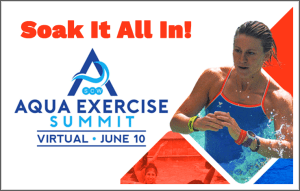
In this study, of the nearly 1,200 older adults with the lowest hip bone density, 86 were diagnosed with dementia within 10 years.
So no one is saying that bone density should be used to screen older adults for early dementia. Instead, Ikram said, bone health should be on everyone’s radar when an older person is diagnosed with the brain disease.
At the same time, it is thought that many of the things that support overall physical health are good for the brain, too.
Snyder said that a healthy diet, exercise, and staying mentally and socially engaged “are all things we can do today to maximize our brain health.”
She noted that the Alzheimer’s Association is running a clinical trial that is testing whether those lifestyle measures can help preserve brain function in older adults who are at increased risk of cognitive decline.
What This Means for You
A healthy diet, exercise and staying mentally and socially engaged are good for your brain and your bones.
Please find the original article HERE
Amy has been a medical journalist since 1999. She was a staff writer and editor for Physician’s Weekly, Medical Tribune and Reuters Health, and has written on health and medicine for MSNBC, The Scientist, Prevention and other publications. When she’s not writing, she is teaching yoga or dancing.

A New Method for Lower Back Healing
by Joanna Stone
Fitness professionals are aware of the benefits of training with a balance trainer such as increased performance, better stability to prevents injury/falls, improved mobility, and stronger core and legs. In this new format created by Joanna Stone of Barre Vida, Balance Trainer and Barre, there are even more benefits, including lower back rehabilitation and pain relief.
According to a review of studies published in the Journal of Physical Therapy Science, more than 50 percent of people in the United States live with chronic back pain. Although there are many causes of back pain, researchers know that there is a correlation between weakened core muscles, mobility issues, and back pain intensity. “According to the results of various scales and evaluation instruments, core strength training is more effective than typical resistance training for alleviating chronic low back pain. We recommend focusing on training the deep trunk muscles to alleviate chronic low back pain.”
Barre comes from a technique created by Lotte Berk, a Jewish dancer who escaped Nazi Germany and re-located to England. It was in England that she created her movement technique that later became the foundation for the barre workout. Berk derived the method from her dance training and as a method to heal a lower back injury. She first introduced the pelvis tilt, which she invented after a doctor recommended that she curve her lower back during exercise.
Now combined with the Balance Trainer, this pelvis tilt can be supported, properly learned, and emphasized in core exercises. The Balance Trainer and Barre format focuses on the deep transverse abdominal and pelvic floor work and a strong grounded glute connection. It teaches diaphragmatic breathing during the core workouts with a strong exhale on the exertion as the navel draws to the spine and the core muscle engage, and a released inhale to allow for proper form and repetition. Diaphragmatic breathing for at least ten minutes a day three times a week has been shown to reduce pain and associated symptoms. People dealing with chronic pain have an activated fight or flight system, and the diaphragmic breathe helps them return to the rest and restore branch of the autonomic nervous system.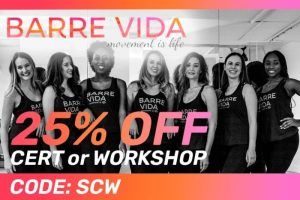
The core work/diaphragmatic breathing in combination with strong gluteal muscle work is important for both performance and injury prevention because glutes are the pelvic stabilizing muscles that keep the hips and pelvis in proper alignment during exercise. The Balance Trainer and Barre method utilizes both modalities to allow students to focus on the proper form without overworking the hamstring, quadricep, or calf muscle in the place of the gluteus, which can often happen in students with weak glutes or without the somatic knowledge of how to activate the glutes. In the current sitting culture, gluteal muscles are underused, which in turn can lead to injury and pain.
The leg work section is best done with an adjustable and moveable ballet barre, that can be on a high level. However, it can be done with a barre attached to the wall, the back of a chair, a countertop, or a weighted bar.
Here are two exercises to try from the Balance Trainer and Barre Format.
Exercise 1
Set up: Place the balance trainer on the ground and sit down so the sit bones are placed so close to the edge that they might be able to touch it. Lay back with hands behind the head and allow the lower back to touch the balance trainer. Bend the knees and place the feet on the floor.
Exercise: Inhale and expand the stomach, exhale, and draw navel to spine sharply and hold while lifting the torso towards the knees, the lower back stays pushed against the balance trainer. The tailbone curls a little down and out, once the torso is lifted off the balance trainer, do two tiny rotations from the upper body (above the floating ribs) return the torso and inhale. Make sure the rotations and lift are all done on the exhale or the holding of the exhale in.
Video Link: https://youtu.be/KOBfADN1Rds
Exercise 2
Set up: Place the balance trainer on the ground directly next to the middle of the barre. The edge of the balance trainer should almost be under the barre. Stand on the balance trainer in the center with one foot and hold the barre for balance.
Exercise: Tilt forward, hands on the barre, draw elbows by the sides, the standing leg is slightly bent, and the lifted leg is straight behind. Keep the back straight and the head above the shoulders. Draw the lifted leg into the body with a bent knee while lifting the torso and straightening the standing leg on the exhale, then return the moving leg back out to straight and bend the supporting leg on the inhale. Do 5 – 10 reps both legs.
Video Link: https://youtu.be/mELXv5I6UV4
The Balance Trainer and Barre class includes a cardio section which allows students to put into practice what they learned in the toning and breathing section: moving with a strong core and gluteus while maintaining a steady breath. For clients who need low impact, the cardio section can be done with modifications and still raise the heart rate. Arms, thighs, and plank are also part of the workout so students will get a full body strength and cardio workout, plus jumping on the balance trainer is fun!!
To learn more about the Barre Vida Balance Trainer and Barre Method, check out www.barrevida.org . There are upcoming In-Person trainings, an On-demand training being released in July 2023, plus classes that you can take through the Barre Vida digital library and a select few on YouTube. Be sure to check out Joanna Stone and Kenyetta Brasher’s, Barre Vida Balance Trainer and Barre Session at the Atlanta MANIA® to do the method in person.
 About the Author: Joanna Stone
About the Author: Joanna Stone
Joanna Stone founded and created Barre Vida®, a barre fitness method and a barre instructor certification. She leads both the Barre Instructor Certifications and Barre Master Instructor Certifications. She created the Barre Vida Suspension Trainer and Barre Method plus the new Barre Vida Balance Trainer and Barre Method. She presented at the 2020 and 2021 Barre Summit and will present at Atlanta SCW MANIA® 2023. Joanna teaches Barre, HIIT, Pilates, and Yoga in NYC and privately trains individual clients. She has a BA and an MA in dance, is AFAA certified, and a RYT.

 About the Author, Kylie Ross
About the Author, Kylie Ross
Kylie is Owner of VK Professional Services and VRoK Fitness. VK Professional Services offers tax planning and preparation, bookkeeping, notary, website design and business consulting. She is a Certified Personal Trainer from SCW, Nutrition Coach, and Bariatric Health Expert. She has been in both industries professionally for almost 6 years. She’s a Gastric Bypass recipient, 11 years and works hard to stay healthy and fit now she assists others to prevent obesity-driven conditions via virtual and mobile fitness and nutrition guidance.

5 Balance Exercises to Challenge Active Seniors
Courtesy of HURUSA
WHY EVERY SENIOR SHOULD TURN THEIR WORKOUT INTO A BALANCING ACT
Our ears contain a remarkable balance epicenter called the vestibular system that helps us know where we are in space at any given point in time. Are we lying down or standing up? Are we walking up the stairs, or sitting in a chair? The vestibular system detects the answers to questions such as these and communicates that information to the brain.
The system is also directly connected to the parts of the brain that controls our ability to maintain balance. When the vestibular system senses that we’re falling, it communicates this to the balance centers in our brain. In turn, our brain signals to the rest of our body that it’s time to take appropriate measures to prevent a fall.
This happens so quickly and automatically that we’re not aware of all the signals zipping back and forth from our ears to our brains and throughout the rest of our bodies. But anyone who’s instinctively stretched out their arms to steady themselves or brace for a fall has experienced it happening.
The vestibular system is important to our remaining upright.
But, as we age, vestibular system cells begin to die off.
As you can imagine, this has a significant impact on balance. Without a high-functioning vestibular system, our brains have trouble understanding where we are in space, setting us up for dangerous situations.
For example, let’s pretend you’ve just stubbed your right toe. To compensate, you automatically shift all your weight to the left foot. If your vestibular system doesn’t quickly detect this shift in balance, it’s less likely that your brain will send out danger signals that would otherwise protect you from tilting too far left and taking a fall.
In addition to a fuzzy and sluggish vestibular system, most of us experience diminished eyesight as we age. Most seniors are likely to have poor depth perception and low sensitivity to contrast, especially at night. Making matters even more challenging is the fact that aging comes with a natural loss of muscle mass, strength, speed, reflexes, and coordination.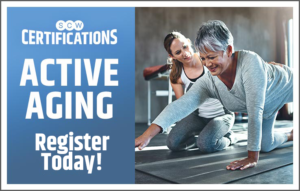
In our younger years, our bodies react swiftly to the threat of a fall. But, as we age, that reaction time slows, sometimes considerably.
Health problems such as arthritis, stroke, multiple sclerosis, and Parkinson’s disease weaken our aptitude for good balance even further. But, even in otherwise healthy seniors, the body’s natural deterioration can cause us to fall before we even realize we’re at risk.
This is why balance training is so important for older adults – especially in combination with strength training.
When strength training and balance exercises work together, significant improvements can be made in our ability to remain footloose and fancy free. Research shows that regular resistance training increases bone density, keeps joints supple, and counteracts age-related muscle loss. This not only equips our bodies to be able to prevent a fall, it makes injury less likely if we do.
A quick word to trainers and care professionals about balance assessment.
What follows is a list of 5 exercises specifically designed to challenge active seniors. If you’re a trainer or care professional who works with older adults, adding these into your clients’ training plans will make a significant improvement in their ability to balance.
How much of an improvement? You’ll only know the answer to that question with regular assessment.
The HUR SmartBalance is an excellent tool for assessing balance and accurately identifying users with a high risk for falling. In addition, the HUR SmartBalance offers customized training recommendations and easy comparison of previous balance tests, so that you can track improvements. And improvement tracking is one of the most effective motivators to continue balance training.
If you don’t have access to a HUR SmartBalance, there are other ways to incorporate regular assessment and improvement tracking into your clients’ training programs. Accurate fall risk assessment includes a thorough evaluation of both internal and external risk factors.
At a minimum, an accurate, effective Balance Risk Assessment should include these 5 elements.
Download our free guide on 5 crucial balance and strength training equipment considerations for reducing falls.
5 BALANCE TRAINING EXERCISES TO CHALLENGE ACTIVE SENIORS
The following exercises are designed to help active seniors who are also engaged in regular strength training to combat age-related declines in balance. The exercises rely on a moderate to high level of muscle strength and flexibility.
Regardless of ability level, it’s important to have a stable chair, wall, or railing within arms’ reach during or all five of these exercises.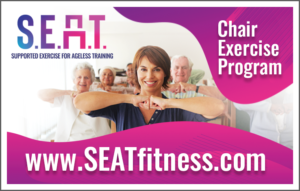
1. Balance on One Leg
Stand straight, with both feet together, and the abdominal muscles contracted slightly to support the back. Lift one foot, with the knee facing forward or to the side. Hold the position first with eyes open, then with eyes closed. Switch feet and repeat.
2. Leg Swings
Stand on one leg and raise the other leg three to six inches off the floor. Keep your arms straight at your sides or place hands on your hips. Slowly swing the raised leg forward and backward, touching the floor mid-swing for balance, keeping hips stable, and the upper body upright. Complete the swing 4 or 5 times, touching the floor as the foot swings forward and backward.
Then repeat the move 4 or 5 times without allowing the foot to touch the ground. Before placing the foot back down on the ground, swing it out to the side, then back to center, repeating the motion 4 or 5 times. Place both feet back on the ground and repeat with the other foot.
3. Around the Clock
Stand up straight, with abdominal muscles slightly contracted and both hands on hips. Raise one leg to balance fully on the other leg. As you visualize a clock, raise the arm on the same side as the raised foot straight overhead to 12. Slowly move the arm to the side (three), then circle down to nine without touching the raised foot back to the floor. Switch to the opposite arm and leg and repeat.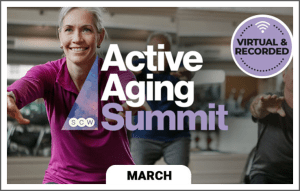
4. One-Legged Squat
Stand straight, with feet hip-width apart. Point the toes of the left foot, and slide it out in front of the body, with toes just barely touching the floor as you do. Raise both hands straight out in front of the body so they are parallel to the floor. As you move the foot forward, push hips back and down into a one-legged squat position.
Only lower to a point that is challenging, but still comfortable, and be sure that the knee doesn’t extend beyond the toes. Keep the chest upright, eyes forward, and your arms out front. Slowly return to starting position, raising the body first, then pulling the outstretched foot back to the center. Switch feet.
5. Single-Leg Dead Lift
Hold a 1 to 10-pound weight in the right hand. Raise the left foot off the floor and tightly engage the abdominal muscles. Bend forward at the hips while reaching toward the ground with the right hand, lowering the weight towards the floor.
As you do, raise your left leg straight out behind you for counterbalance. Tighten the buttocks and slowly return to the starting position. Keep your knees relaxed and back flat throughout the movement. Switch legs.
Learn more about the impact that regular balance training can have on older adults, and how the HUR SmartBalance makes it easier than ever for next-generation rehabilitation and senior living providers to assess risk and provide solutions.
Together we can create a new age of strength and balance for the seniors in our communities.
Please find the original article HERE
HUR is a pioneer in research-driven solutions designed to strengthen quality of life.

Do You Need an Electrolyte Powder
It’s become a common sight at the gym. People toting giant Thermos water jugs and packets of electrolyte powder. But what’s in those powders? Which electrolytes are lost when you sweat? How much is lost? Are these products worth the cost? Sounds like a lot to digest, but a few basic rules of thumb can help you find the right hydration balance for you.
Breaking it Down
Electrolyte powders typically contain varying combinations of sodium, potassium, magnesium, and sometimes calcium. The reason we use electrolyte powders is to enhance water retention and replace electrolyte loss (mostly sodium) during exercise or hot activities. Electrolytes assist in muscular contractions, energy regulation, and maintaining fluid balance (which, among many other benefits, also keeps joints lubricated during exercise).
Sodium is widely found in our food supply and commonly consumed in high amounts thanks to the overabundance of processed foods, restaurant meals, and salty snacks. The average American consumes over 3,400 mg of sodium per day and the daily recommendation is <2,300 mg per day. There is an active debate about whether or not we should care about consuming too much sodium – but the bottom line is that we are not deficient. Potassium and magnesium are a different story. These minerals are found in fresh vegetables, fruits, nuts, seeds, and legumes. Most of us do not get enough of these valuable nutrients, but foods are better sources than most supplements. A banana, any potato product, or a glass of milk will offer more potassium than most electrolyte replacements. Magnesium is a new player in these types of products, with comparable amounts in foods and electrolyte powders, but can usually be taken more cost-effectively as a separate dietary supplement.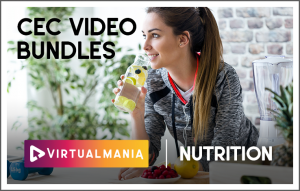
The Daily Reference Intake for water as set forth by the National Academies, the Institute of Medicine, and the Food and Nutrition Board recommends men strive for 100 oz or 3L of “fluids” (drinking water and beverages) per day, and women strive for 75 oz or 2.2L of fluids per day.
Keeping it Real
So, let’s put those recommendations into practical application. What size is your “carry” water bottle (gym/car/work/travel)? Next, what size is your “home” water glass? For me, my carry bottle is 26 oz and home glasses are 12 oz. I typically drink (4) home glasses per day with various meals and snacks and (2) 26-oz “carry” bottles per day. That puts me at 4 x 12 = 48 oz and 26 x 2 = 52 oz, which totals 100 oz per day. I’m easily hitting my water goals. Okay, that’s me. Now think about your average day and fluid intake. While this might seem like excess math, it’s a calculation that you only have to think through ONCE… then you can use this information to balance your hydration status for the rest of your life.
What about the “water loss” factor? We lose water in various ways:
- Exercise (1 lb of body weight loss = ~16 ounces of water/sweat loss)
- Diet (sodium, protein, alcohol, high caffeine (>500 mg per day) can contribute to water loss)
- Hot and/or humid environments
- Age (medications, lower thirst sensations, less concentrated urine)
- Disease and illness
Your total water needs are a combination of the Daily Reference Intake and replacing lost water. Those numbers can vary by the day, so it’s also important to recognize and watch for physical signs of dehydration:
- Mouth so dry it’s hard to form saliva
- Excessive thirst
- Dark urine (apple juice or darker)
- If after hot/long exercise with excessive sweating: do you have muscle cramps, contractions, or weakness?
- Weight down more than 1% of average morning weight
- Dizziness, headache, or fatigue
Hydration During and After Exercise
The general rule of thumb is that if you are exercising < 60 minutes, in moderate temperatures, with moderate sweating, you are unlikely to need an electrolyte replacement. If you exercise more than 60 minutes and/or sweat excessively and/or in high temperatures, an electrolyte powder is a good idea. However, it is easy to replenish lost water and sodium using plain water and salty foods (see Table 1) such as: pickles, beef jerky, salted sunflower seeds, pistachios, or a handful of pretzels. These types of food offer more sodium than an electrolyte beverage (plus other nutrients) and also satisfy our cravings to eat.
If you want to try an electrolyte powder, check out the table below that compares popular electrolyte products. As with many debates in nutrition, the most important factor to consider depends on your personal needs and concerns. Maybe you prefer not to use products with artificial food colorings and sweeteners and want to boost your potassium and magnesium content? Try the Ultima products! Maybe you are looking for low-carb and moderate sodium replenishment? Try the Liquid IV Multiplier. Or maybe you are an endurance athlete or doing intense exercise in the heat? Try the higher sodium product, LMNT (Watermelon Salt is a great flavor!).
Table 1 – Comparison of Electrolyte Products, Flavored Water, and High-Sodium Foods
Product | Product Type | Serving size | Carbo- hydrates | Sodium | Potassium | Magnesium | Food Coloring | Sweetener |
Gatorade Thirst Quencher | Electrolyte Drink | 20 oz | 27.5 g | 200 mg | 62.5 mg | None listed | Red 40 (Fruit Punch – flavor) | Sugar |
Propel Powder | Electrolyte Powder | 1 packet w/ 20 oz water | 0 g | 210 mg | 70 mg | None listed | None (Berry flavor) | Sucralose, Acesulfame Potassium |
Gatorlyte | Electrolyte Drink (lower sugar) | 20 oz | 14 g | 490 mg | 350 mg | 105 mg | Red 40 (Kiwi Strawberry flavor) | Sugar, Stevia |
Liquid IV Hydration Multiplier | Electrolyte Powder | 1 packet w/ 20 oz water | 11 g | 500 mg | 370 mg | None listed | None (Seaberry flavor) | Sugar, Stevia |
LMNT | Electrolyte Powder | 1 packet w/ 20 oz water | 2 g | 1000 mg | 200 mg | 60 mg | None (Watermelon Salt flavor) | Stevia |
Crystal Light | Flavored Water | 1 packet w/ 20 oz water | None listed | None listed | None listed | None listed | Red 40, Blue 1 (Raspberry Lemonade flavor) | Aspartame, Acesulfame Potassium |
Ultima Replenisher | Electrolyte Powder | 1 packet w/ 20 oz water | 0 g | 55 mg | 250 mg | 100 mg | Beet juice concentrate, beta carotene (Orange flavor) | Stevia |
Pickle | High-Sodium Food | 2 spears (40g) | 1 g | 652 mg | 90 mg | 6 mg | None | None |
The Bottom Line
The casual fitness enthusiast can usually meet their needs with plain water and a little food coordination. Water, a banana, and some salty sunflower seeds or nuts could do the trick. If food is not feasible for time, shopping, or prep purposes, then try an electrolyte powder. The most important thing? Enhanced water or not, just drink up!
 About the Author, Melanie Douglass
About the Author, Melanie Douglass
She is a published author, international presenter, group fitness instructor, and the VP of Business Development for lolo, an app development company specializing in fitness, nutrition, and music. Contact Melanie anytime! [email protected] or on social: Melanie Douglass Lee (@melaniedouglass) • Instagram photos and videos:
Looking for a New Job? SCW Can Help!
Facilities need you! Whether it’s Teachers, Trainers, Directors, or Managers, SCW’s new FREE JOB BOARD is supporting the industry’s need for qualified fitness pros.
We post openings in all three of our monthly e-newsletters: Spotlite, Health & Fitness Business News, and Tidal Waves which are emailed out to tens of thousands of fitness professionals teaching and training in all formats along with managers and directors at all fitness facilities: big box, gyms, boutique, studios, not for profits and independent centers.
Group Exercise Instructor
Woman’s Center for Wellness – Baton Rouge, LA
Candidate will instruct fitness classes, such as Yoga, Indoor Cycling, Aqua, Mat Pilates, Zumba, strength training, etc.
Candidate must have group exercise certification, professional liability insurance and CPR/AED required; specialty certification in Yoga, Indoor Cycling, Aqua, REFIT, HIIT, Mat Pilates, Zumba, strength training and/or circuit preferred.
Fitness Specialist
Brooksby Village – Peabody, MA
Create an appropriate exercise program, unique to the clients abilities and goals for both 1-1 and group personal training.
Knowledge of basic water chemistry testing for aquatic center and/or teaching aquatic classes.
Developing exciting group exercise classes in a safe and engaging environment.
Fitness Coordinator
Georgia Southern University – Statesboro, GA
This position develops and supervises a comprehensive group fitness program, to include small group training, and related special events.
Assistant Director, Fitness
Leonard J. Kaplan Center for Wellness – UNC Greensboro
The Assistant Director, Fitness is responsible for the overall design, management, and implementation of a comprehensive fitness program for the students, faculty, staff and UNC Greensboro community. This includes leadership of two professional positions and a graduate assistant as well as student employees.
Club Leader
Element3 Health – Chicago Heights, IL
Element 3 Health is looking for a skilled club leader to lead a club for older adults. Theses clubs include fitness, yoga, dance, and arts and crafts. This, is a unique opportunity to teach an in-person session, to actively train older adults and be responsible for your own club.
Exercise Physiologist
Woman’s Center for Wellness – Baton Rouge, LA
Conducts 1-on-1 and group training exercise sessions with cancer survivors, bone health sufferers, and other related diagnoses. Other duties include exercise testing and evaluation, and the development of appropriate exercise programs. Performs other duties assigned by department management. Must be knowledgeable of exercise standards and guidelines established by the ACSM.
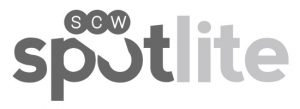 We’re always looking for great content highlighting the newest things in the world of fitness. Please submit your article directly to [email protected] for immediate consideration!
We’re always looking for great content highlighting the newest things in the world of fitness. Please submit your article directly to [email protected] for immediate consideration! Spotlite, March 22, 2024
Spotlite, February 19, 2024
Spotlite, January 20, 2024
Spotlite, December 21, 2023
Spotlite, November 18, 2023
Spotlite, October 22, 2023
Spotlite, September 21, 2023
Spotlite, August 19, 2023
Spotlite, July 19, 2023
Spotlite, June 19, 2023
Spotlite, May 18, 2023
Spotlite, April 21, 2023
Spotlite, March 28, 2023
Spotlite, February 18, 2023
Spotlite, January 21, 2023
Spotlite, December 16, 2022
Spotlite, November 19, 2022
Spotlite, October 22, 2022
Spotlite, September 24, 2022
Spotlite, August 23, 2022
Spotlite, July 22, 2022
Spotlite, June 20, 2022
Spotlite, May 18, 2022
Spotlite, April 20, 2022
Spotlite, March 25, 2022
Spotlite, February 17, 2022
Spotlite, January 14, 2022
Spotlite, December 17, 2021
Spotlite, November 18, 2021
Spotlite, October 25, 2021
Spotlite, September 16, 2021
Spotlite, August 9, 2021
Spotlite, July 10, 2021
Spotlite, June 8, 2021
Spotlite, May 14, 2021
Spotlite, April 30, 2021
Spotlite, March 30, 2021
Spotlite, February 23, 2021
Spotlite, January 20, 2021

